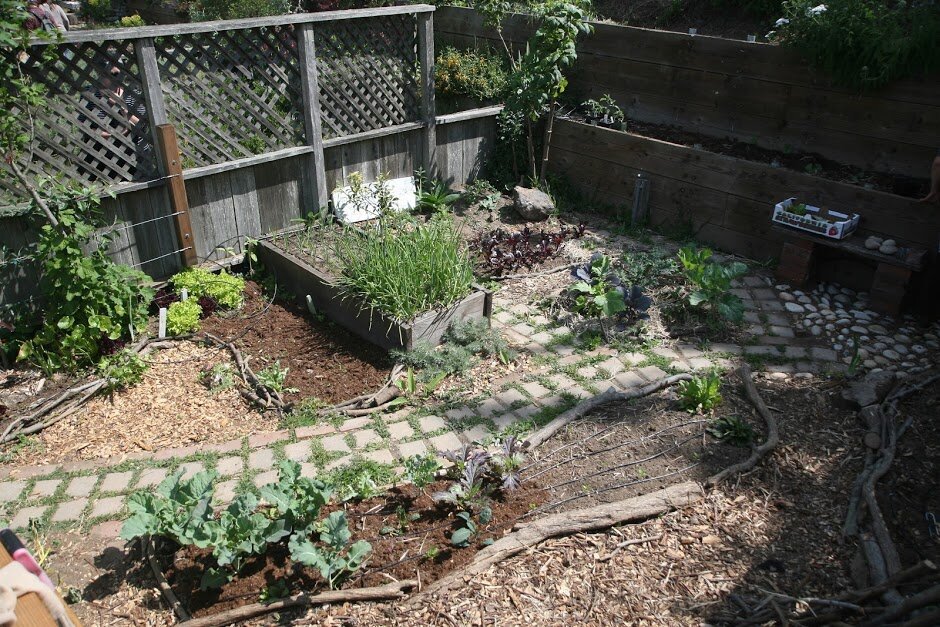30th Anniversary Historical Post: GFE and Victory Gardens in San Francisco
/A World War 1 War Gardens poster.
We’re going to jump around in time here as we address Victory Gardens in San Francisco’s history, and where GFE intersects with it. Victory gardening, at its core, is growing food-producing plants in one’s own yard. This concept was extended out to the nation by the federal government during World War 1, and at this time, they were called War Gardens. The idea was that having citizens raise their own food at home would reduce the war’s economic toll so that money and energy could be spent to end the conflict.
1943 Victory Garden poster. Hubert Morley, artist.
Fast-forward to World War II, when the concept was revived. San Francisco was pretty crazy about Victory Gardens, and had one in front of City Hall. San Francisco was a leader in the national effort, and in the end had 70,000 documented Victory Gardens! 400 families had large plots assigned by the city on the slopes around Laguna Honda Hospital, and the strong organization of this effort was a model for counties around the nation. This detailed historical essay provides compelling insight into San Francisco’s Victory Garden efforts.
San Francisco City Hall Victory Garden, 1943. Photo credit: FoundSF.org / Private photo collection
Fast-forward again to the 2008 economic recession. Just before this time, artist Amy Franceschini won the Society for the Encouragement of Contemporary Art (SECA) Award from the San Francisco Museum of Modern Art. She focused her award project on reviving the Victory Garden movement in a new era of financial struggle. Along with then-GFE Director Blair Randall, Amy established GFE’s Victory Garden as a way to show SF residents how they could raise a bounty of food even in a small city yard. Her project included several SF residential yards as well. This work coincided with and inspired the re-establishment of a City Hall Victory Garden for six months, spearheded by Slow Food Nation, designed by landscape architect John Bela, and planted by hundreds of staff and volunteers. Randall was an integral participant in this effort.
GFE’s first iteration of its Victory Garden, created by Amy Franceschini and Blair Randall, Summer 2008
Teh 2008 San Francisco City Hall Victory Garden.
GFE’S Victory Garden area continues to demonstrate to the garden’s visitors how they can transform their yards into beautiful food-growing spaces at any time, not just in times of crisis. The three raised vegetable beds, two ground-level beds, and the two espalier apple trees efficiently use a compact space to grow a variety of food. And while the design of the garden has changed since 2008, its aim remains the same — to empower San Francisco residents to raise healthy food just a few steps away from their doors.
GFE’s VIctory Garden, Fall 2019. While the appearance has changed, the goal of empowering San Franciscans to grow their own food at home remains the same.
In the COVID19 shelter-in-place era, the idea of people raising their own food has re-entered the public dialogue. While we are not in a conventional war, conditions are prime in many ways for us to (re-)consider our relationship to food and how it relates to health and economic security. We hope that this time will inspire people in San Francisco and around the world to establish and keep a constant crop of fresh food growing at home well into the future. Photo credits: FoundSF.org / Private Collection








